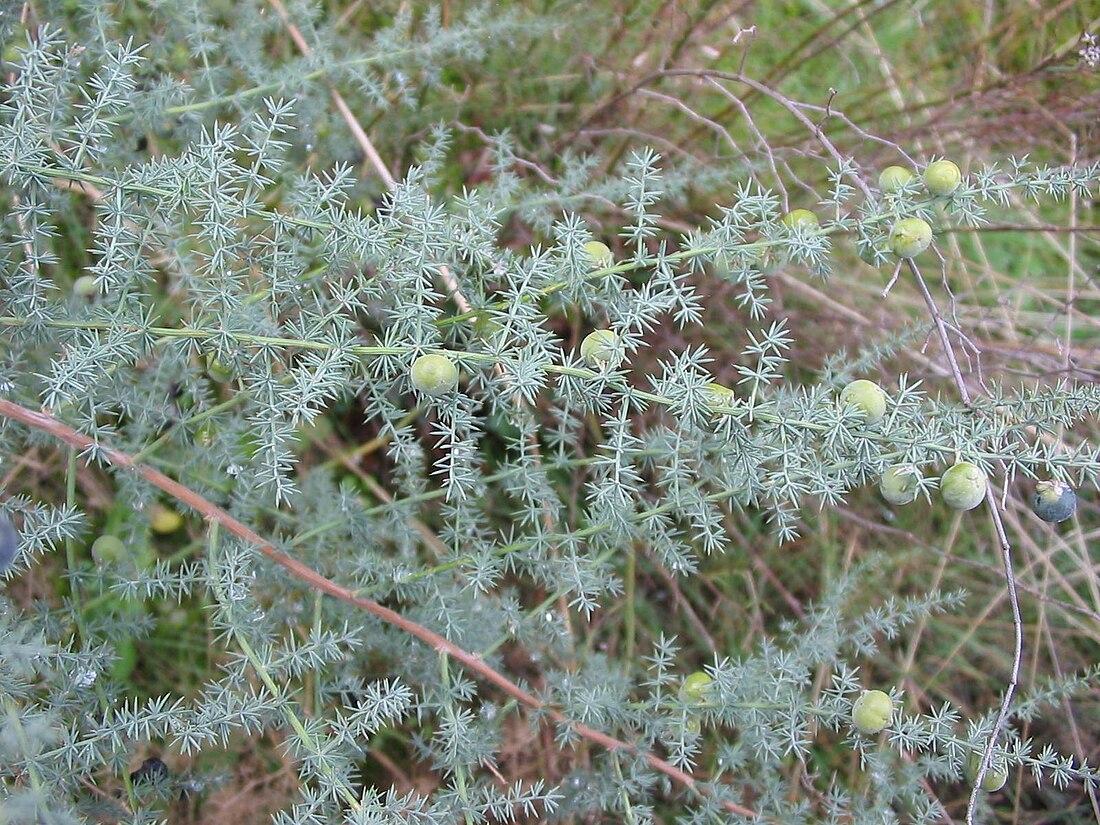Top Qs
Timeline
Chat
Perspective
Asparagus acutifolius
Species of plant From Wikipedia, the free encyclopedia
Remove ads
Asparagus acutifolius, common name wild asparagus, is an evergreen perennial plant belonging to the genus Asparagus. The specific epithet, acutifolius is derived from Latin acutus (pointed, acute), and -folius (-leaved), and refers to the characteristic shape of the leaves, a quite common feature in the typical plants of the Mediterranean.[2]
Remove ads
Description
Asparagus acutifolius reaches on average 30–70 centimetres (12–28 in) of height. The stems have much-branched feathery foliage. The "leaves" are in fact needle-like modified stems. The flowers are bell-shaped and in small clusters, greenish-white to yellowish, 4.5–5.5 millimetres (0.18–0.22 in) long. The flowers are dioecious (on each plant they are only female or male). In some Mediterranean regions flowering occurs in late summer from August through September, often after heavy storms. In this case the small green berries, of 5–6 millimetres (0.20–0.24 in) in diameter, are fully ripe in winter.
Remove ads
Gallery
 |
 |
 |
 |
Distribution
This species is present throughout the Mediterranean Basin.
Habitat
These plants grow near woods and in uncultivated places, on dry and sunny soil. They can be found at an altitude of 0–1,300 metres (0–4,265 ft) above sea level.
Uses
Shoots are collected in the spring along the Croatian coast and islands and eaten in risottos and fried with scrambled eggs.[3][4]
References
External links
Wikiwand - on
Seamless Wikipedia browsing. On steroids.
Remove ads


